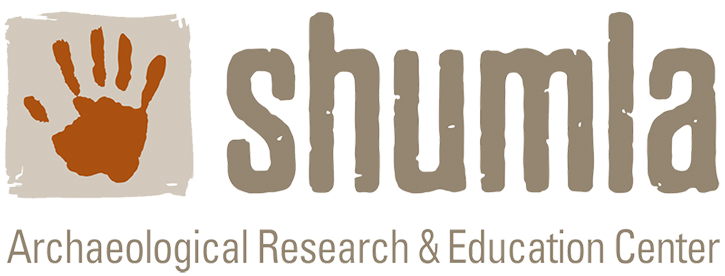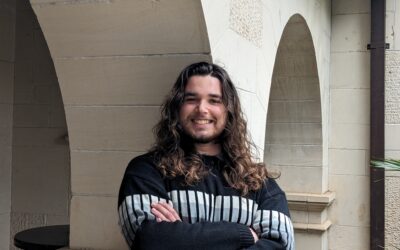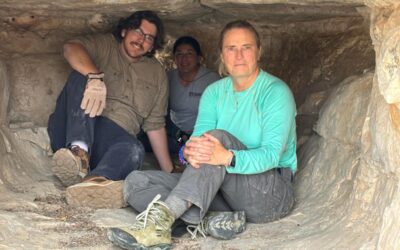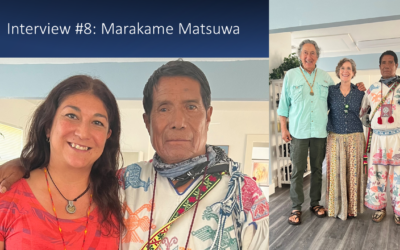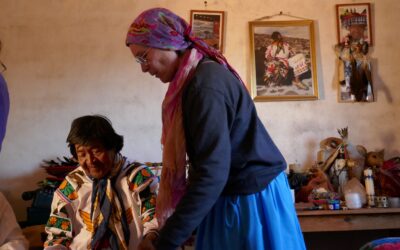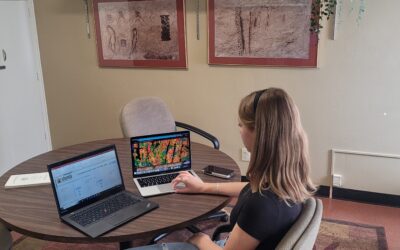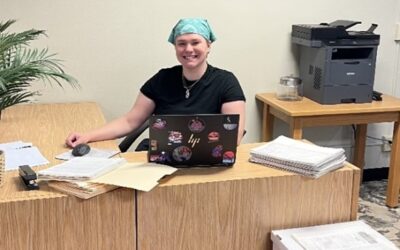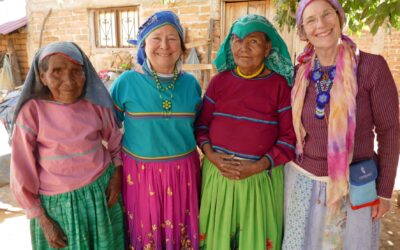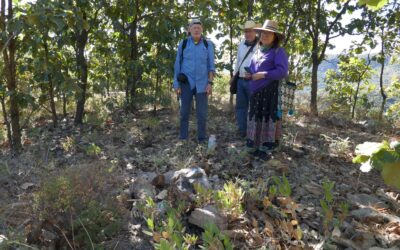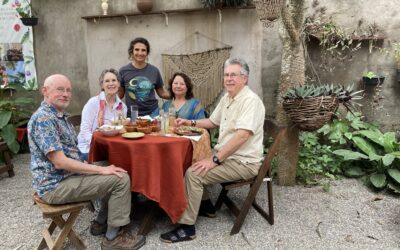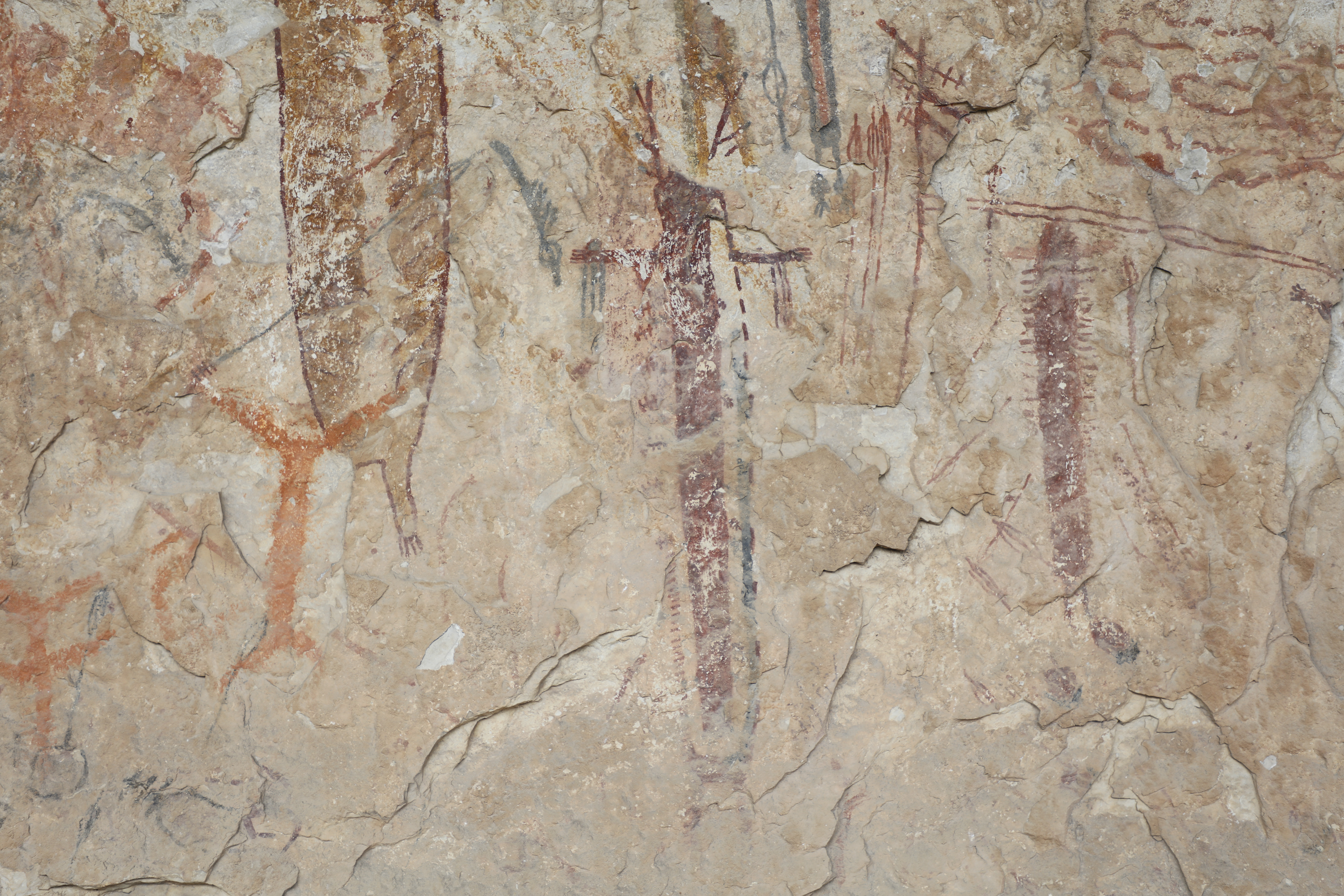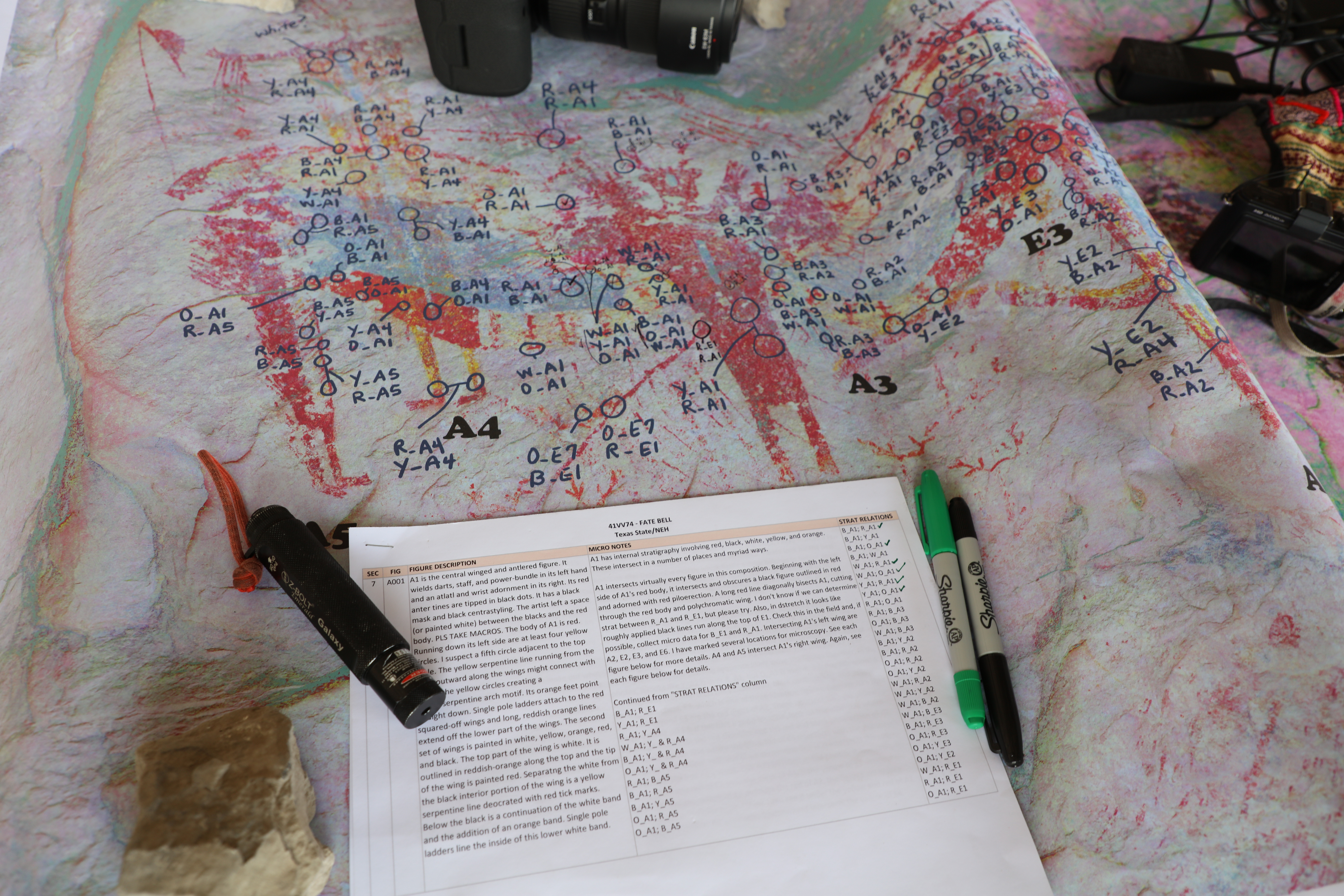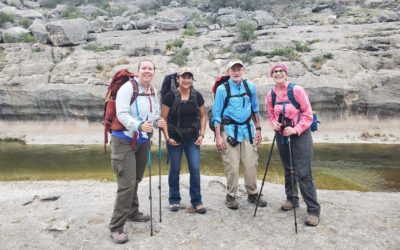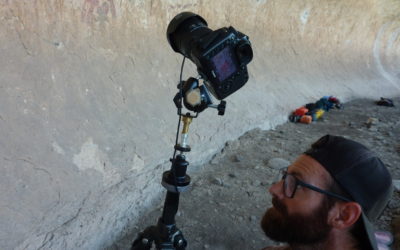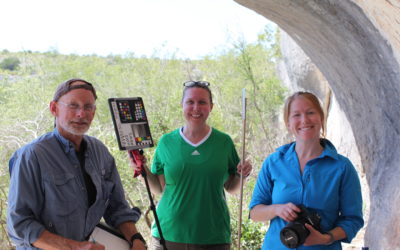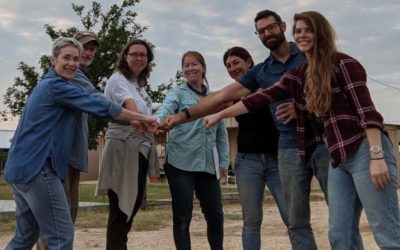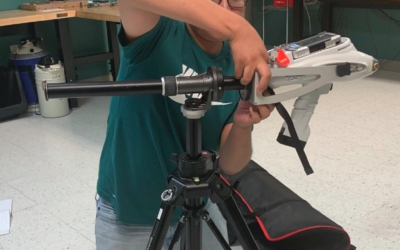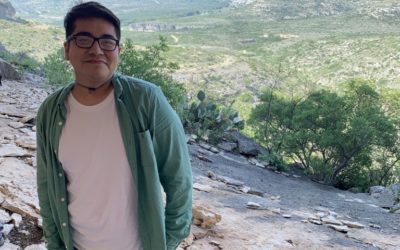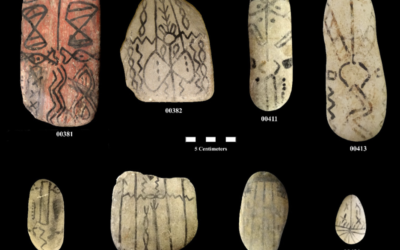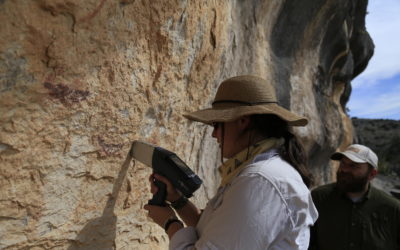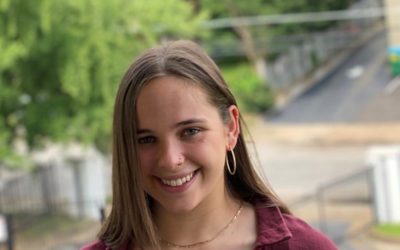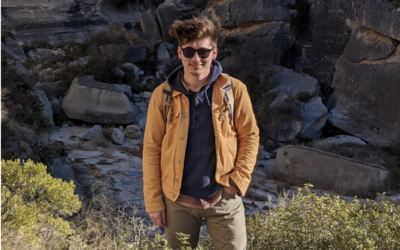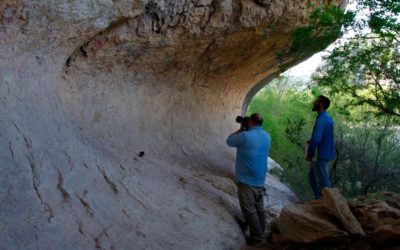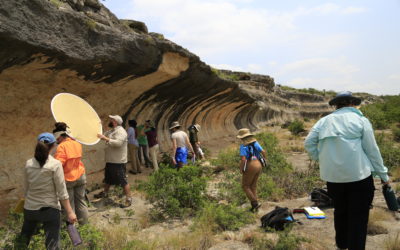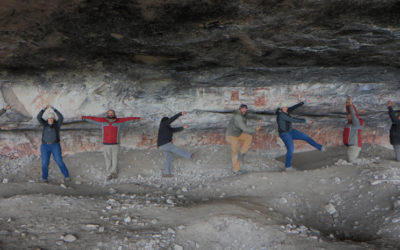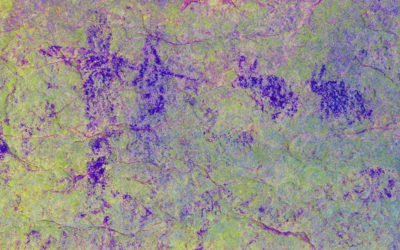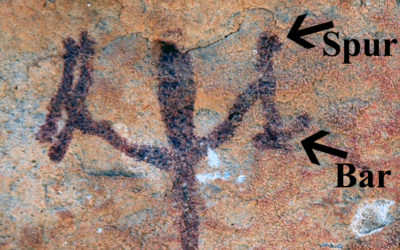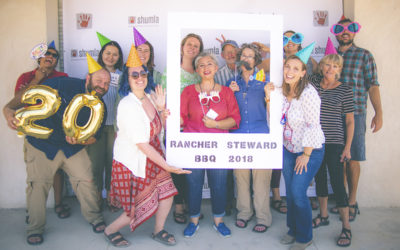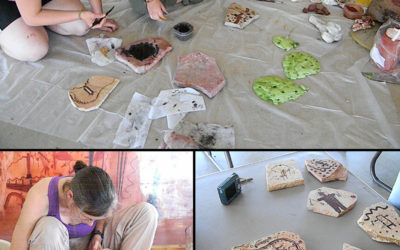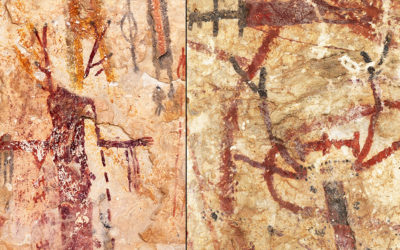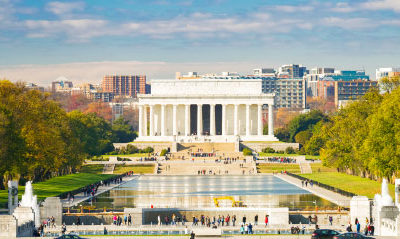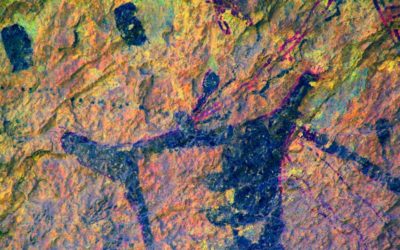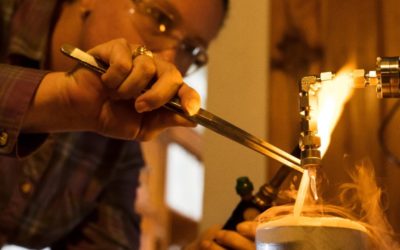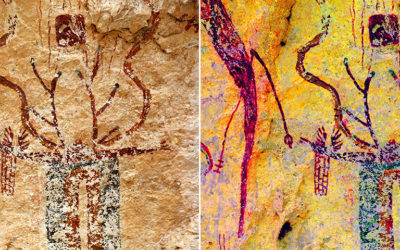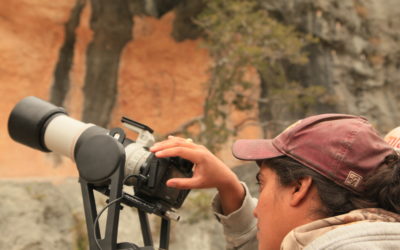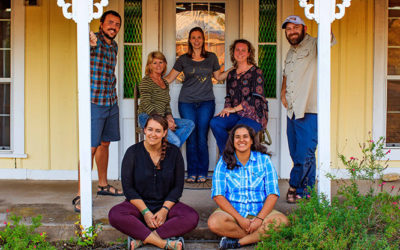Shumla Blog
Welcome to the Shumla Blog Page! Here we will share our ongoing research and other Shumla happenings with you, our friends, colleagues, and collaborators around the world. This blog will not only feature our ongoing work as part of the Alexandria Project, but also give insights into some of the broader research questions Shumla is exploring – and much more. Happy reading!
Shumla Intern Blog: Memphis Mallory
Memphis Mallory interned at Shumla in Spring 2025, working on curating and digitizing legacy archives that support Shumla’s preservation mission.
Notes from an Enthusiastic Volunteer
As my tour guiding partner likes to say, “Kelly, you are an enthusiastic volunteer.” When Shumla preservation archaeologist Diana Radillo Rolón asked me to join them for a rock art documentation excursion I immediately said “Yes!”
Shumla Volunteer Blog: Robert Stein
Robert Stein volunteered for Shumla during his Fall semester of 2023. During his time working with Shumla, he has worked on digitizing physical collections of Pecos River Style rock art documentation donated to Shumla.
Processing and Organizing the Data
The contrast between field work and lab work is often striking, and our experience in Mexico is no exception. We left the spontaneous and unpredictable fieldwork conducted in the wide-open spaces of the sierras to begin our deliberate and meticulous lab work, stuck in front of a computer for hours on end.
The Hearthstone/National Endowment for the Humanities Interviews
In 2016, Carolyn Boyd and Kim Cox suggested that Pecos River style (PRS) murals are visual narratives containing evidence of el nucleo duro (the hard nucleus), a widespread Archaic core of beliefs persisting across time and across cultural, linguistic, and geographic boundaries. If this is true, then Indigenous people living today should be able to relate PRS imagery to their cosmology. In 2021, Carolyn was awarded a National Endowment for the Humanities (NEH) grant through her position at Texas State University to test this hypothesis and Shumla received a subaward as part of this collaborative grant.
Shumla Volunteer Blog: Chloe Bluemel
Chloe Bluemel started volunteering at Shumla on July 24, 2023. During my time, she has analyzed the anthropomorphs depicted on the walls of Jaguar Shelter, written extensive descriptions, and entered this information into the Shumla database.
Shumla Intern Blog: Madeline Okkonen
Former Shumla Intern, Madeline Okkonen, recalls her experience as an intern in San Marcos in the spring of 2023. She retells her time on an archive research and mapping project as well as fieldwork training with the crew to learn about the Shumla Method of Rock Art Documentation.
Ethnographic Fieldwork in San Andrés Cohamiata, Mexico (Part Three)
Part three of Carolyn Boyd and Phil Dering’s Mexico experience, as part of Shumla’s Hearthstone Project, describes their time at the rancho on the mesa at the edge of San Andrés and our trip out of the sierras.
Ethnographic Fieldwork in San Andrés Cohamiata, Mexico (Part Two)
Part two of Carolyn Boyd and Phil Dering’s Mexico experience, as part of Shumla’s Hearthstone Project, gives an account of our experience at a rancho the barrancas.
Ethnographic Fieldwork in San Andrés Cohamiata, Mexico (Part One)
Part one of Carolyn Boyd and Phil Dering’s Mexico experience, as part of Shumla’s Hearthstone Project, provides background to our project and describes the first few days in Mexico and in San Andrés Cohamiata.
In the Lab: Determining Paint Stratigraphy
In ancient societies, the process of producing art carried as much meaning as the finished product. This is why we seek to discover how the Pecos River style murals were painted.
Fate Bell
Fate Bell is a massive rockshelter in Seminole Canyon State Park and Historical Site. Our field work focused on a famous set of well-preserved images at the southern end of the shelter, commonly called “The Triad”.
Painted Canyon
Painted Canyon houses two spectacular rock art sites, Jackrabbit and Jaguar shelters. The mural in Jaguar shelter is the oldest we have yet radiocarbon dated in the region. It may contain the oldest securely dated pictographs in North America. We are conducting additional research as part of the field work described in this blog to confirm our findings.
In the Field at Halo Shelter
In this installment we take you with us into the field. Join us in Halo Shelter! We’ll share a couple of tricks of the trade and some unexpected findings that resulted from our 14 days in front of this incredible panel.
Our Research Plans
Is Pecos River Style mural art a surviving manifestation of core beliefs that formed the basis for later Aztec, Toltec, and Olmec religions? If this is true, then regardless of group affiliation, any person with a working knowledge of the transcendent myths informing the art could read the murals.
Introducing the Hearthstone Project
The Hearthstone Project is a collaboration between Texas State University and Shumla Archaeological Research and Education Center. The project is anchored in both science and the humanities, combining two research and preservation efforts, both partially funded by the...
Summer 2021 Shumla Internship Experience: Part 2
Before you read on, be sure to check out Summer 2021 Shumla Internship Experience: Part 1 to see how this story began! As fun as field days are, the lab is where I truly flourished. My first month was spent learning all about the portable X-ray fluorescence (pXRF)...
Summer 2021 Shumla Internship Experience: Part 1
I’m Jesse Velasco and am honored to have been a Shumla Intern from June 2021-August 2021. I graduated from the University of Central Arkansas with a degree in chemistry in May of 2021. After graduation, I was ready for a new opportunity and when I caught wind of using...
Science in Translation Part III: pXRF, Pigments, and Pebbles, Oh My!
By Bec Heyman & Karen Steelman
Hi everyone! This post is about how Shumla uses pXRF to study prehistoric paintings….This time we’ll be talking about mobiliary or portable art objects aptly named painted pebbles from the Lower Pecos Canyonlands of southwest Texas.
Science in Translation Part II: X-Ray Blasts that Highlight the Distant Past
By Bec Heyman
Hi everyone! Bec here again to share some more information about pXRF and how we use it in the field! In my last blog post, (“Science in Translation Part I: What is Portable X-Ray Fluorescence Spectroscopy?”), …
Science in Translation Part I: What is Portable X-Ray Fluorescence Spectroscopy?
Helpful Abbreviation Key! pXRF: Portable X-ray Fluorescent Spectroscopy XRD: X-ray Powder Diffraction PRS: Pecos River StyleIntroductionThere are a lot of things about reading scientific journals, publications, and research reports that seem daunting. They might as...
Keep Calm and Love Plasma Oxidation
Hey, Shumla family! Rudy Banny here. I had the pleasure of interning with the Shumla team from January to March of 2020, training with Dr. Karen Steelman in Shumla’s Archaeological Chemistry Laboratory. During this time, I had the incredible opportunity to engage with...
Rock Art Exhibit for Public Archaeology Week
Welcome Shumla blog readers. A special welcome to those joining us for the SAA online Public Archaeology Week! If this is your first time to learn about Shumla, we are a non-profit archaeological center conducting rigorous rock art documentation along the United...
Summer in the Lower Pecos: A Tale of Three Interns
By Megan Blackburn, Kasia Cross, and Dee Morris
Welcome back to the Shumla blog! We’re the 2019 Shumla Summer Interns: Megan Blackburn, Deianira Morris, and Kasia Cross. We have organized our learning experience as interns at Shumla into four intertwined categories …
10 Days in Fate Bell Shelter
By Jerod Roberts and Vicky Roberts
We knew from the beginning of The Alexandria Project that documenting Fate Bell Shelter was going to be a monumental task. A typical rock art site may take us only a few hours to complete our baseline level of documentation, …
Time Does Not Heal All: Observable Deterioration in the Rock Art of Seminole Watering Hole (41VV72)
**This blog is based on the poster presented by Hailey LaRock and Caitlin Houle at the 2018 Texas Archeological Society Annual Meeting in San Antonio, Texas, titled: “Time Does Not Heal All: Observable Deterioration in the Rock Art of Seminole Watering Hole.” A...
Atlatls in Lower Pecos Rock Art
By Charles Koenig
One of humanity’s oldest weapon systems is the atlatl, or spear thrower. The atlatl functions as a lever to throw a dart (or spear) with greater speed, distance, and accuracy than a hand-thrown spear. Atlatls were used by humans as early as 20,000 ago, …
Documenting Satan Canyon Gallery: A Tale of Two Interns
By Hailey LaRock & Caitlin Houle
Hi Shumla friends, Hailey and Caitlin here! We’re the 2018 Shumla archaeological interns, and we wanted to share our experience documenting an incredible rock art site called Satan Canyon Gallery. Satan Canyon Gallery is located near the Devils River, …
Rancher Steward BBQ – A Birthday Celebration!
By Amanda Castaneda and Jessica Lee
In early June Shumla hosted our annual Rancher Steward BBQ, an event we hold to honor and thank the many landowners, stewards, and partners that we work with throughout the year.
A Recipe for Success: Experimental Archaeology and Paint Making
By Amanda Castaneda and Charles Koenig
One of the most frequently asked questions during a rock art site tour is, “How did these ancient artists create the paints they used?” And we usually throw the question right back and ask, “How would you create a paint if you were a hunter-gatherer …
Variation of Pecos River Style Antlered Anthropomorphs
By Charles Koenig and Amanda Castañeda
Over the course of the Alexandria Project, one of our primary objectives is to identify repeated rock art attributes, figures, and/or motifs. As explained in the Iconographic Inventory blog, we’re recording a limited number …
Shumla in Washington D.C.
We’re here at the 83rd Annual Society for American Archaeology Meeting!
Shumla’s Chemistry Lab Part II: Radiocarbon Dating Eagle Cave Rock Art
**This the second of two blog posts describing the Shumla Chemistry Laboratory. This post is based on the poster presented by Karen Steelman at the 2017 Texas Archeological Society Annual Meeting in Grapevine, Texas, titled: “Radiocarbon Dating Rock Paintings: New...
Shumla’s Chemistry Lab Part I: Plasma Oxidation & Radiocarbon Dating
**This post is the first of two blog posts describing the Shumla Chemistry Lab and our plasma oxidation system.** By Karen L. Steelman In my role as Shumla Research Director, I have been working alongside the team on The Alexandria Project, as well as pursuing...
The Hibiscus Shelter Rock Art Curtain
***This blog post does not deal directly with the Alexandria Project, but is a throwback to a Shumla – Ancient Southwest Texas Project (ASWT) collaboration at Hibiscus Shelter back in 2012.*** By Charles Koenig Hibiscus Shelter is located on the Ryes N’...
To Iconography… And Beyond!
By Amanda Castañeda and Charles Koenig
This blog post focuses on a key aspect of Shumla’s documentation methods and the Alexandria Project: iconography. Iconography includes the documentation, study, and interpretation of images and symbols. Archaeologists working …
High-Resolution Rock Art Documentation and Digital Preservation
As detailed in the last blog post, during the Alexandria Project we are collecting quite a bit of different data, and these data are helping us address our project goals and research questions. One of the primary goals of the Alexandria Project is to preserve the Lower Pecos rock art sites for future generations because many of the pictographs are deteriorating due to age (up to 4,000 years old) and natural weathering.
Welcome to the Shumla Blog!
Welcome to the first post of the new Shumla Blog! We started this blog to be able to share our ongoing research with our friends, colleagues, and collaborators around the world. All of us at Shumla are very excited for the ability to share our progress from our newest research program, the Alexandria Project.
eNews Archive
View our archive of eNewsletters and see what we’ve been up to!
Give to Shumla
Support Shumla Interns!
